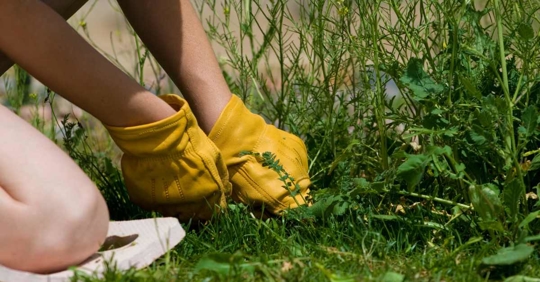A lush, green lawn is something many homeowners in Prince Frederick and surrounding areas work hard to maintain. But late summer can bring challenges, especially when it comes to invasive weeds. Warmer temperatures, periodic rain, and thinning turf create the perfect opportunity for certain aggressive weeds to spread. If not addressed, these weeds can compete with your grass for essential nutrients and moisture, compromising the health and appearance of your lawn.
Notice weeds starting to creep in? Don’t wait—see how our weed control services can help before they become harder to manage.
Below are five of the most common and persistent weeds homeowners in Central and Southern Maryland are likely to encounter in late summer. Each one brings its own set of challenges, but knowing what they look like and how they behave can help you stay ahead.
1. Crabgrass
Crabgrass is one of the most aggressive summer annual weeds and can be difficult to control once it matures. It thrives in hot weather and often takes advantage of bare or thinning patches of lawn.
How to Identify It:
- Light green blades that grow low to the ground
- Wide, flat leaves that radiate from a central point, resembling crab legs
- Often found in compacted or disturbed soil
Crabgrass grows faster than turfgrass and can quickly dominate lawn areas, crowding out healthy grass and leading to bare spots once it dies off in the fall. If they have already emerged, post-emergent spot treatments can be helpful. In the future, a pre-emergent applied in spring and maintaining a thick lawn through proper mowing and watering can reduce its chances of returning.
2. Nutsedge
Nutsedge is not technically a grass but a sedge, and its unique growth habits make it a stubborn intruder. It prefers moist soil but can also show up in lawns with poor drainage or overwatering.
Key Traits:
- Bright green leaves that are stiffer and shinier than turfgrass
- A triangular stem when rolled between your fingers
- Grows faster and taller than surrounding grass
Nutsedge spreads through underground tubers called nutlets, which can remain dormant in the soil and resprout later. Pulling it often leaves these nutlets behind. Selective herbicides designed for sedges are usually needed. Improving drainage and adjusting irrigation schedules can also make your lawn less inviting to nutsedge.
3. Spotted Spurge
This low-growing annual weed is a common problem in thin, open areas of lawn. It reproduces rapidly and forms dense mats that are hard to dislodge once established.
Identification Features:
- Small, oval leaves with a reddish central spot
- Milky sap when the stem is broken
- Typically forms circular mats close to the soil surface
Spotted spurge can germinate and spread within just a few weeks. Its low profile helps it escape the lawnmower, and its seeds can remain viable for years. Proper mowing, watering, and fertilization can help your turfgrass outcompete it. Targeted herbicide treatments are most effective when the weed is young.
4. Summer Chickweed
Though spring chickweed is more commonly known, a summer variety can also take hold in shaded, moist environments in late summer. It grows rapidly and forms dense groundcover that chokes out grass.
Signs to Look For:
- Small white star-shaped flowers
- Opposite leaves on sprawling stems that root at the nodes
- Prefers shady or damp areas of the lawn
It can spread quickly in areas where turf is thinning due to heat stress or compacted soil. If left unchecked, it can reappear season after season. Aerating compacted soil and thinning tree canopies to increase sunlight can reduce ideal conditions for chickweed. Pull small infestations promptly, and consider selective herbicides if it becomes widespread.
5. Goosegrass
Goosegrass usually appears later in the summer and often thrives in soil that’s been compacted by foot traffic or machinery. It looks similar to crabgrass but is generally flatter in appearance.
Distinguishing Characteristics:
- Low, flattened growth habit
- Blades grow in a spoke-like pattern from the center
- Leaves are darker green and more coarse than crabgrass
Goosegrass can tolerate low mowing heights and high soil compaction. Once established, its root system makes it hard to remove manually. Relieving soil compaction through aeration and raising your mowing height can help suppress goosegrass. A combination of cultural practices and post-emergent control methods are often necessary.
How to Stay Ahead of Weeds This Season
The weeds mentioned above are just a few of the most common threats during late summer, but they serve as a good indicator of the kind of lawn stress that invites invasive plants. A comprehensive approach that includes maintaining healthy soil, consistent mowing practices, and the right weed control applications can go a long way toward protecting your lawn.
If you're unsure what weeds are popping up or how to safely treat them, the team at Natural Green Systems is here to help. We offer weed control services designed for Maryland lawns that focus on targeted treatments while promoting healthier turf.
Have questions or need a professional evaluation? Reach out through our online contact form or call us at (443) 733-6179. Let’s take the stress out of late summer lawn care.

